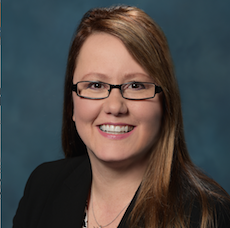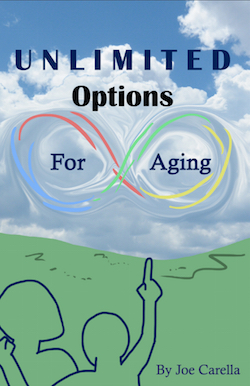
Continuing care retirement communities should consider allowing nonelderly couples and families to live there, Joe Carella mused recently. We were discussing his new book, “Creating Unlimited Options for Aging,” and the philosophy of the nonprofit Scandinavian Living Center in West Newton, MA, which aims to emulate the best of the Scandinavian model of older adult assisted living. Carella is executive director there.
It was an experience in high school that put Carella on the path to a career in elder care and, specifically, to the Scandinavian model of seniors housing that he helped implement in New England. Carella injured his knee and wound up spending four days in the geriatric ward of a hospital in a room with one man who had gangrene and another who had Alzheimer’s disease.
Time in the institutional setting “destroyed me as a person as far as my childhood disappeared, but it also gave me insight on how we’re treating elders,” he told me. “From that moment on, I was just very focused on finding answers.”
Principles of the Scandinavian model
As a graduate student at Babson College, he traveled to Scandinavia and visited dozens of retirement homes. He learned the four principles of the region’s senior living model there.
 The first principle? Maintain residential reality — “basically doing everything you can to eliminate institutional thinking,” Carella said. One way the principle manifests itself at the Scandinavian Living Center is that residents do not share rooms.
The first principle? Maintain residential reality — “basically doing everything you can to eliminate institutional thinking,” Carella said. One way the principle manifests itself at the Scandinavian Living Center is that residents do not share rooms.
The second principle is “maintain our lifestyle. That basically is designing a building that allows people to feel that they can maintain their hobbies or what’s important to them,” Carella said. That “our” in “our lifestyle,” is important, he added, “because you and I are part of this answer. What’s good for you and me is good for everybody.”
In keeping with this principle, the Scandinavian Living Center incorporates universal design principles everywhere, Carella said. “If you and I walk into this building today and then four or five years later land in a wheelchair, we don’t want to be reminded that we have limitations by hitting a wall or struggling to get out a door,” he said.
The third principle is to promote autonomy and choice. For example, the Scandinavian Living Center has a fitness center but also has a courtyard that enables residents to see nature when they open their doors, just as they might if they lived in a traditional house. Residents might choose to exercise in the fitness center or to walk around the courtyard — 13 laps equal a mile. Or they might choose to do nothing. It’s their choice.
Also, all apartments come with washer and dryer hookups so that residents can do their personal laundry if they wish, even though the community also has a laundromat. “Some people still want their washer/dryer in their apartment, because it’s a choice,” Carella said. And it’s a way for residents to exercise control and responsibility in their lives, he added.
More than person-centered care
If, right about now, you’re thinking that these principles sound a lot like person-centered care, I agree with you. It’s the fourth principle that sets the Scandinavian model apart from other efforts.
That principle, community-centered living, emphasizes the group ahead of the individual.
“Community-centered living is actually the most important part of all of this,” Carella said. “You can design a beautiful building. You can have a country club atmosphere. But if you isolate the people living there, in any housing, that’s not natural, and it’s the beginning of institutional living.”
The Scandinavian Living Center hosts clubs from the greater community, fostering interaction between residents and nonresidents. A local physical therapy practice has set up shop in the fitness center, bringing younger clients into the community, where they connect with residents in the cafe and other areas. And performances at the Scandinavian Living Center’s performing arts center are a big draw for the greater community.
The community has only 40 apartments but welcomes 2,000 visitors every month.
“It’s not easy,” Carella said of the effort that was required to prove the benefits of the approach to residents of the assisted living community and the greater community. “You don’t force this thing. You just let it happen naturally and expose people to each other, just like anything in life. Eventually, people get it.”
The Scandinavian approach results in savings to the greater community, keeps elders active and also helps shatter misconceptions about aging that exist in the greater community. “When you connect elder folks with all the generations, they become elders of the community, and that’s where they belong,” Carella said. “They should never stop giving back their wisdom and experience.”
Which brings me back to Carella’s recommendation that CCRCs house more than solely older adults. “Someone said to me, ‘Why would a young couple want to live in a CCRC?’ ” Carella said. “Well, I would definitely want to live there … because I want my kids to be exposed to those seniors. Why not? We need to think out of the box. We need to stop building beautiful, isolated castles and try to be part of the answer for a community coming together.”
Also working toward togetherness
The philosophy reminds me of that of Baltimore-based Smart Living 360, which recently opened The Stories in Rockville, MD (read about it in our 2015 Dealmaker’s Handbook), 40 apartments for those aged 55 or more years. They feature universal design and are located in a 380,000-square-foot mixed-used complex of retail and service offerings as well as another grouping of apartments marketed to younger adults. The difference there is that the cost of care and services is not bundled in with the cost of housing; residents can arrange for what they need with the help of a concierge.
The approach also brings to my mind the increasing number of senior living operators that are welcoming college students and baseball players as residents or are choosing to build new communities in settings that promote interaction between generations. I wrote about those efforts in a recent column.
Carella said room exists for many different approaches to senior living. It goes back to a couple of words in the title of his book — unlimited options — and the choices they enable.
“But part of that formula has to be a connection,” he said. “Any type of connection where you bring all generations together is a good idea.”
Lois A. Bowers is senior editor of McKnight’s Senior Living. Contact her at [email protected]. Follow her on Twitter @Lois_Bowers.



